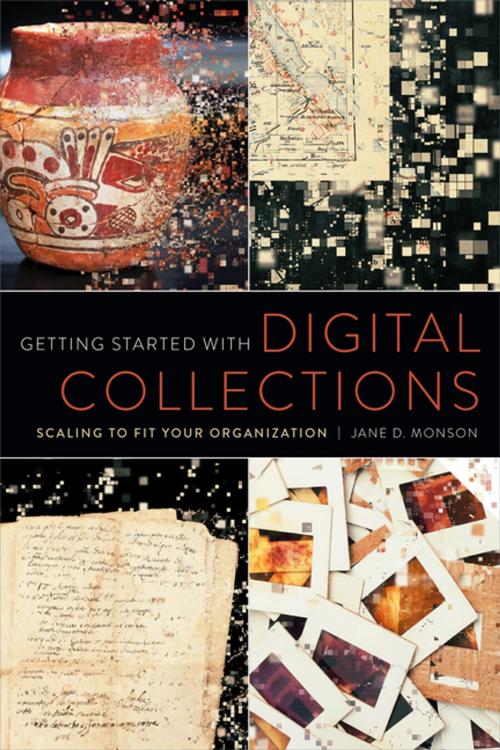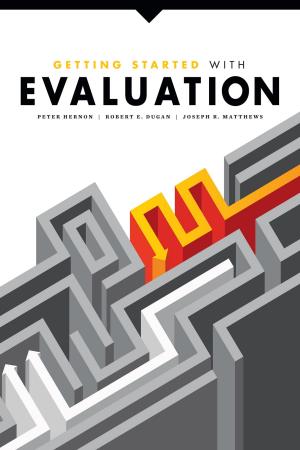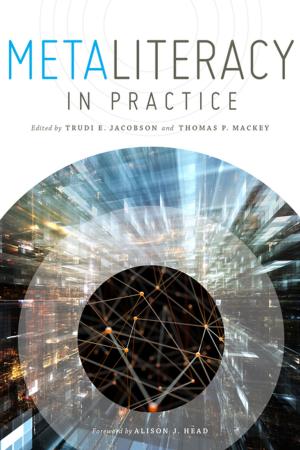Getting Started with Digital Collections
Scaling to Fit Your Organization
Nonfiction, Reference & Language, Language Arts, Library & Information Services, Reference| Author: | Jane D. Monson | ISBN: | 9780838915462 |
| Publisher: | American Library Association | Publication: | February 3, 2017 |
| Imprint: | ALA Editions | Language: | English |
| Author: | Jane D. Monson |
| ISBN: | 9780838915462 |
| Publisher: | American Library Association |
| Publication: | February 3, 2017 |
| Imprint: | ALA Editions |
| Language: | English |
Digital collections have already changed the ways users access and interact with an institution’s materials. And small or medium-sized libraries, archives, museums, and historical societies face a unique set of challenges in regards to digital collections. They may have been unable to jump on the digitization bandwagon at its beginning due to competing priorities or lack of resources, and may now be struggling to get a digitization program in place to meet the evolving needs and expectations of their own users. The good news is that digital projects can scale down to fit the size of any organization. Providing an entry point for librarians, archivists, and curators who are new to digitization, Monson’s well-researched guide shows how even smaller institutions can successfully endeavor to make their content digitally accessible. Clearing aside the jargon and acronyms to hone in on the practicals, this book will help readers get a digitization program off the ground, offering guidance on how to efficiently harness existing workflows, especially in departments seeing a decline in workload; the pros and cons of the two common service models for state and regional digital repositories; how to evaluate and choose among the digital asset management systems, comparing four proprietary and six open source systems; hardware options for image capture; choices in metadata models MODS, VRA Core, Dublin Core Element Set, and EAD; understanding the characteristics of various file formats and using them effectively to create master and derivative files; bitstream copying, data redundancy and other strategies to safeguard digital files against media degradation and technological obsolescence; and Section 108 copyright exemptions for cultural heritage institutions. This easy-to-follow guide to digitization fundamentals will ensure that readers gain a solid grasp of the knowledge and resources available for getting started on their own digital collection projects.
Digital collections have already changed the ways users access and interact with an institution’s materials. And small or medium-sized libraries, archives, museums, and historical societies face a unique set of challenges in regards to digital collections. They may have been unable to jump on the digitization bandwagon at its beginning due to competing priorities or lack of resources, and may now be struggling to get a digitization program in place to meet the evolving needs and expectations of their own users. The good news is that digital projects can scale down to fit the size of any organization. Providing an entry point for librarians, archivists, and curators who are new to digitization, Monson’s well-researched guide shows how even smaller institutions can successfully endeavor to make their content digitally accessible. Clearing aside the jargon and acronyms to hone in on the practicals, this book will help readers get a digitization program off the ground, offering guidance on how to efficiently harness existing workflows, especially in departments seeing a decline in workload; the pros and cons of the two common service models for state and regional digital repositories; how to evaluate and choose among the digital asset management systems, comparing four proprietary and six open source systems; hardware options for image capture; choices in metadata models MODS, VRA Core, Dublin Core Element Set, and EAD; understanding the characteristics of various file formats and using them effectively to create master and derivative files; bitstream copying, data redundancy and other strategies to safeguard digital files against media degradation and technological obsolescence; and Section 108 copyright exemptions for cultural heritage institutions. This easy-to-follow guide to digitization fundamentals will ensure that readers gain a solid grasp of the knowledge and resources available for getting started on their own digital collection projects.















